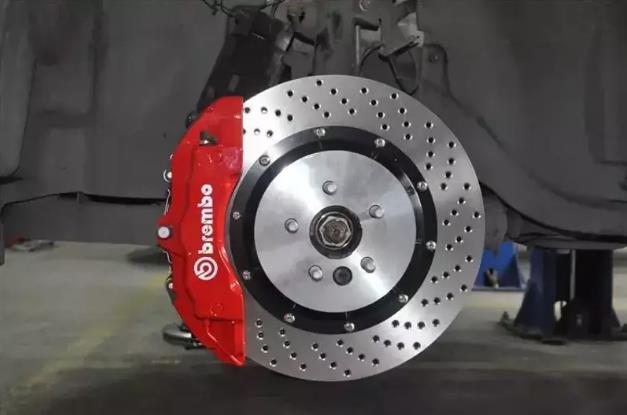When it comes to car brakes, we have to talk about the brake pads. During the operation of the entire braking system, the brake pads are the direct participants of the braking. Through the friction between the brake pads and the brake disc or brake drum, a braking effect is produced, thereby ensuring the safety of driving. Therefore, brake pads are the most critical safety parts in the braking system, and the braking effect is determined by the brake pads. Therefore, it is extremely important to choose suitable and high-quality brake pads. If you want to find a good brake pad, first To understand what the brake pads are. Generally speaking, brake pads are composed of steel plates, bonded heat insulation layers and friction blocks.The trick to choosing brake pads - "Four Looks and Two Choices"!

01 Look at the coefficient of friction
The friction coefficient of the brake pads basically determines the braking force of the brake pads, which is related to the braking effect of the brake pads. Therefore, the choice of the friction coefficient of the brake pads is very important. If the friction coefficient is too low, the braking performance is poor, weak, and the brakes If the distance is too long; if the friction coefficient is too high, it will cause problems such as wheel lock and direction loss. DICASE brake pads are divided into 5 grades, and each grade has a corresponding friction coefficient, ranging from 0.38 to 0.63. Scientific braking Pad grading is helpful for car owners to choose brake pads more conveniently.
02 Look at high temperature resistance
When the brake pad is working, it will not only generate a strong braking force, but also accompanied by extremely high temperature. The high temperature resistance of the brake pad is directly related to the safety of the brake system. Inferior brake pads will have a friction coefficient under high temperature conditions. Falling, or even brake collapse, is extremely dangerous. DICASE brake pads are made of ceramic composite materials, which have excellent high temperature resistance. For example, DICASE's HP4000 brake pads can be used at a maximum temperature of 1100°C.
03 Look at the suitability
When replacing new brake pads or driving a new car, there is a chance that brake vibration, abnormal noise, and peculiar smell will occur. There are two reasons for this phenomenon. One is the poor quality of the brake pads; Poor, the new brake pads can’t run in with the brake disc, or there is a gap between the brake pad and the brake caliper. The DICASE brake pad adopts a new design, which fits the brake disc better. The slotted design has a better heat dissipation effect. Moreover, DICASE brake pads are also equipped with mufflers to eliminate abnormal noise and vibration.

04 Look at the wear resistance
The wear resistance of the brake pad has a great relationship with the manufacturing material and process of the brake pad. The better the wear resistance of the brake pad, the longer the service life. DICASE brake pads use new ceramic materials and ceramic adhesives, which are wear-resistant Good performance, long service life, and safer, and finally use the touch of your fingers to judge the quality of the brake pads. Although high-quality brake pads look very flat and smooth, if you touch the friction surface with your hands, it will feel thorny.
As for the "two choices", they refer to: choose regular manufacturers to produce products; choose professionals to install, the brake pads produced by regular manufacturers have their own brand logo on the packaging box, and clearly indicate the model, friction coefficient, and production number of the brake pads , production batch, production date, etc.
